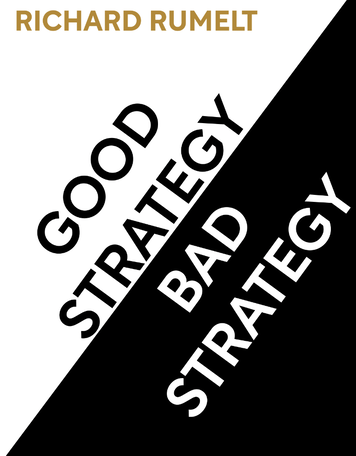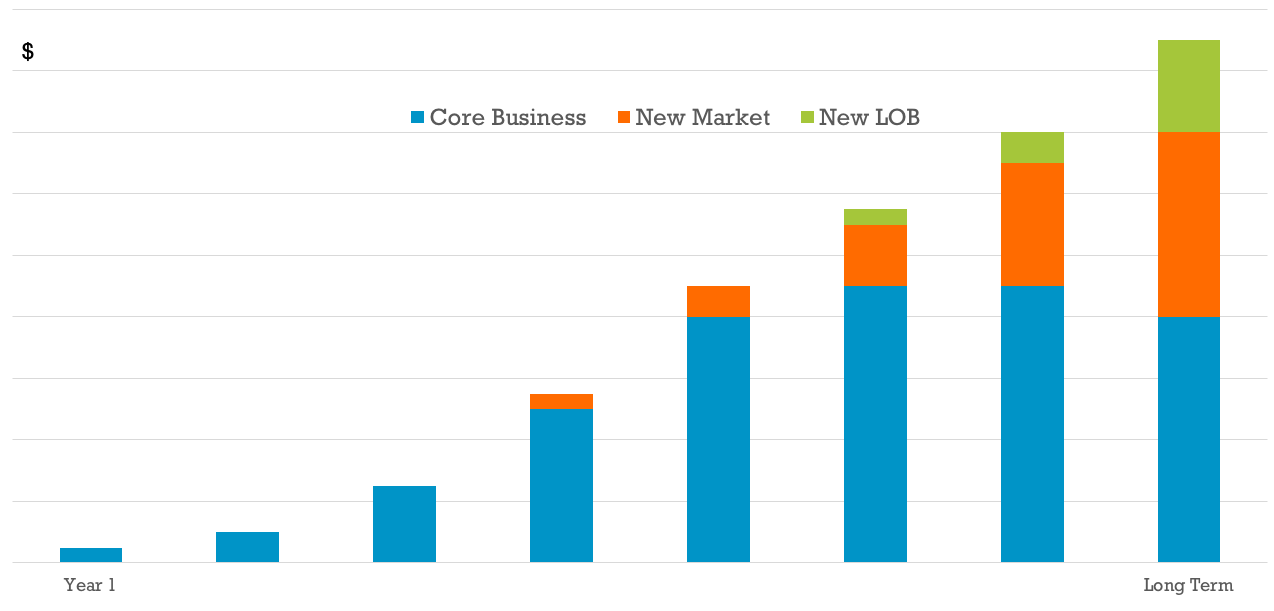|
Popularized by Amazon, a Single-Threaded Owner (STO) is a leader who is 100% dedicated and accountable to a new initiative such as inventing a new product, launching a new line of business, or executing a digital transformation. The Single-Threaded Owner is responsible for turning strategy into real results.
0 Comments
Talking to customers to uncover unmet needs is the most critical part of product strategy. The key to growth is a deep understanding of your target customers. Simply relying on internal ideas is not enough, nor is it enough to just look at google analytics and product usage data. You actually have to talk to the market.
Read my article The Complete Guide to Customer Interviews That Drive Product-Market Fit. When you get to the customer interview, take heed of these crucial guidelines! Good Strategy Bad Strategy: The Difference and Why It Matters by Richard Rumelt is an excellent book. It's available as a PDF online. Below I take excerpts from the book to provide a short summary of its key points.
One of the biggest challenges of a new startup is generating marketing qualified leads (MQLs). A startup is a race: you are burning through limited funding, and every day you need to go all-out before funding runs out. Along the way, you are demonstrating progress to leadership and investors, and there's no better way to keep their confidence than pointing to a pipeline of fresh daily leads.
So how do you get MQLs for your startup ASAP? Product and service offerings follow a growth lifecycle:
Once you hit Flatline and Decline, it is very hard to bounce back. Stories of flatlining businesses that suddenly take off again are rare indeed. While there are ways to resuscitate a flatlining business, the ideal is to NEVER GET THERE IN THE FIRST PLACE and instead take the right actions to ensure continuous growth.
Who are the people that can't live without your product? Why is that product a must-have for them? And what is the difference between these must-have users compared to other users for whom it's just a nice-to-have? These questions are at the root of scaling growth. Find your must-have users.
Yet, when planning target markets, it’s human nature to want to go broad. There is a feeling of safety and comfort. “Why, my product has hundreds of uses, for everyone! Let me list the ways…” But one of the great paradoxes of growth is that, in general, the more broadly you define target markets, the less business you actually take in. It literally pays to get more targeted. Now that you've read the The Complete Guide to Customer Research Interviews, you know that gathering intelligence from customer interviews, market analysis, online research, win/loss analysis, is critical to developing a strategy that drives product-market fit and growth. But once you have accumulated all your customer and market insights, what do you actually do with it? Here are 5 immediate steps to infuse your strategy with intelligence in practice.
In many industries, sales is used to ‘selling’ the vision of the product in advance of it being built, and customers assume vapourware by default. No one bats an eye because we’re accustomed to the idea that engineering will always be able to fulfill whatever we’re selling, given enough time and money.
New technologies like machine learning and blockchain offer a world of possibilities, but many of these possibilities may not actually be able to be implemented in practice, even with a huge budget. It's easy to promise "The product will automatically predict X with high accuracy." where X could be anything from detecting a security breach to predicting stock prices to finding the perfect outfit for you wear. But even if the prototype is already 70% accurate, it may never get to 80%, or whatever you need it to be to be commercially viable. Most companies are laser-focused on meeting the current quarter's target, with an all-hands-on-deck effort by sales, marketing and product to close the gap by quarter-end. There is usually also a funnel of opps and leads for next quarter. But what about 2 quarters out?
Short-term revenue is the lifeblood of the company - you don't survive very long if you don't make your number. So companies get good at meeting their target quarter-to-quarter. But one day the current quarter does not look good. The funnel is just not there. Maybe you've saturated the market, or there's been a disruption, or maybe you just didn't have enough funnel-generating activity 6 months ago. Now you're in trouble, and no amount of short-term execution can solve it. Don't fall into this trap! "How would you feel if you couldn't use the product anymore?" According to growth hacking pioneer Sean Ellis, this is the question to ask to determine your level of product-market fit. In response, you are looking for at least 40% of your customer base who say they would be "very disappointed". This represents user passion.
Read any article on product/market fit and it will say "Talk to customers and focus on their problems. It took us 2 years but we found our product/market fit and sold for $X!". One thing? Simple! Talk to customers.
But there's a startling lack of practical guides on how to actually talk to customers to elicit and qualify pain points. And there are so many false pains that you can latch on to in customer conversation if you don't know what you're doing (which may explain why that article invariably says "it took us 2 years to find what customers wanted"). Let's look at the reasons why actually getting to a real customer pain point is so hard, and how to do it right. Have you ever been involved in a “blue sky” brainstorming session, where teams are encouraged to put aside current constraints and dream up new innovations? In software, this is most common approach to innovation, and if done right, produces some results.
But an article by Uri Neren, founder of The World Database of Innovation initiative, announcing the complete opposite: the number one key to innovation is not the blue sky approach, but an approach involving constraint, scarcity, and closed-world thinking. |












